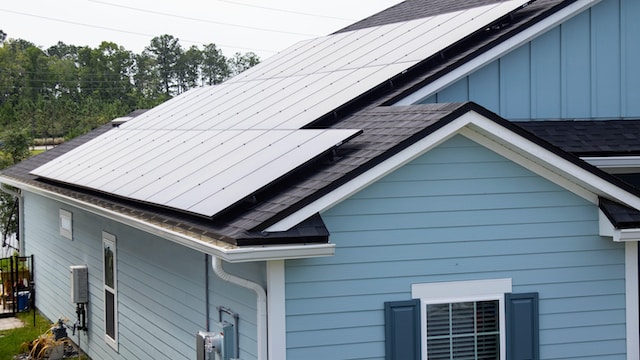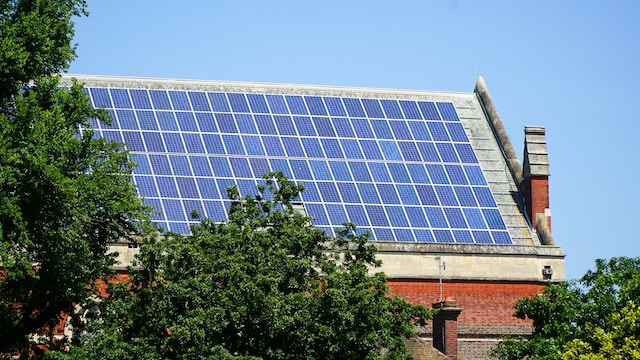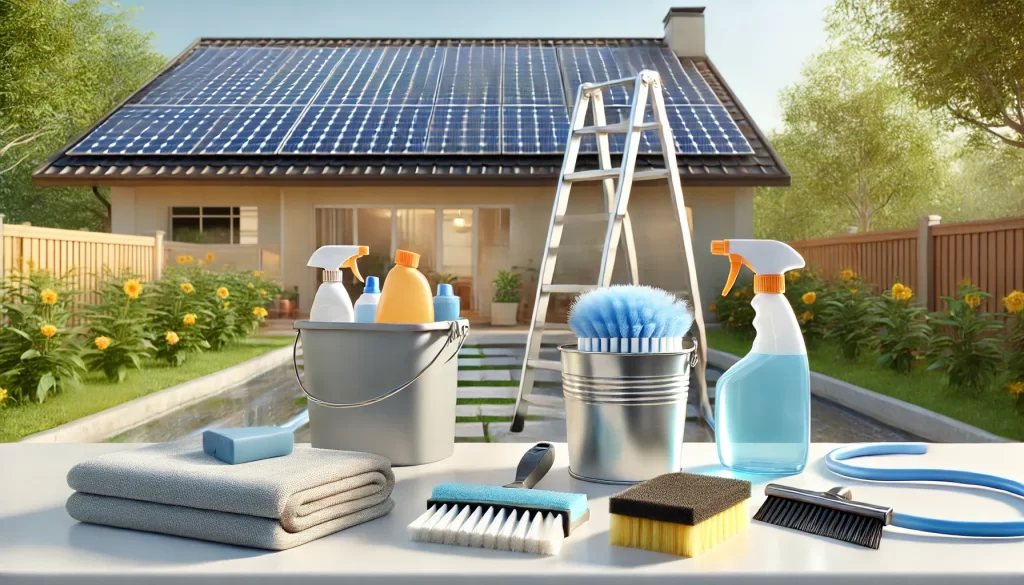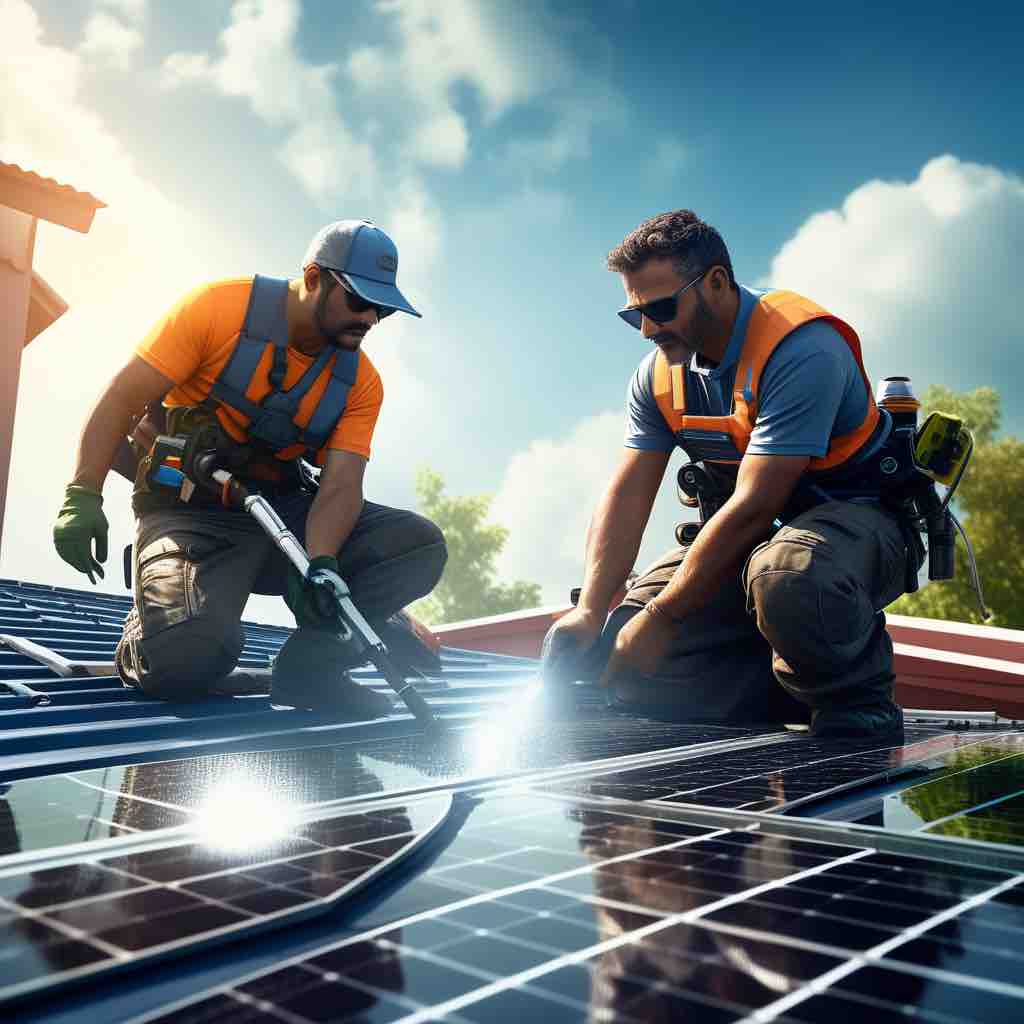Solar panels are more than a way to reduce your electricity bills; they symbolise clean energy and are a practical answer to pollution.
But like all good things, they need a bit of care.
Your solar panels face varying environmental conditions, leading to dirt, dust, bird droppings, and other debris accumulating on the surface. Over time, this can reduce their ability to absorb the sun’s rays.
In this beginner’s guide, we’ll lead you through the steps to keep your solar panels shining and efficient.
Section 1: An Introduction to Solar Panels: What are Photovoltaic Cells?
PV cells, the building blocks of a solar panel, convert sunlight into electricity. Understanding how they work will help you take better care of them.
Section 2: When to Clean Solar Panels: Timing is Everything
Cleaning your solar array at the right time enhances the process. Early morning or late afternoon is best, as the panels are cooler.
Section 3: Tools and Materials: Gather Your Supplies
No need for fancy equipment. A hose, sponge, and mild detergent will do the job.
Section 4: Safety First: Protecting Yourself and Your Panels
Taking precautions is paramount when cleaning your renewable energy system. Get our tips to ensure that you and your panels stay safe.
Section 5: Cleaning Techniques for Maximum Efficiency
Washing away the grime from a solar collector is a gentle process. Remove dirt without damaging the photovoltaic cells.
Section 6: The Environmental Impact: Solar Power and Climate Change
By maintaining your solar system, you are contributing to a brighter, greener future.
Today’s Focus of Attention is reader-supported. We sometimes include products we think are useful for our readers. If you buy through links on this page, we may earn a small commission.
What are Photovoltaic Cells?

PV cells, the heart of a solar panel, are like tiny engines. They take the sun’s energy and turn it into electricity. Here’s how they work:
The Science Behind Photovoltaic Cells
Photovoltaic cells are made of semiconductor materials, usually silicon.
When sunlight hits these cells, it excites the electrons, causing them to move. This movement creates an electric current, which is then captured and used to energise your home. This process is clean and renewable.
Types of Solar Panels
The most common are monocrystalline, polycrystalline, and thin-film. Each has its pros and cons.
Monocrystalline: These are made from a single crystal structure, offering a higher efficiency rate. They are more expensive, but last longer and perform better.
Polycrystalline: They have multiple crystal structures, which makes them cheaper but less efficient than the single-crystal ones.
Thin-Film: Their major advantage is their flexibility and weight. However, they are not as powerful as the other types.
The Connection to Climate Change
Solar energy production is a direct response to the global demand for renewable power sources. It reduces our reliance on fossil fuels and greenhouse gas emissions.
Why Solar Panels Need Cleaning
Accumulated dirt and debris interfere with the amount of sunlight reaching the photovoltaic cells. Even a thin layer of dirt can reduce a solar panel’s efficiency by up to 25%.
Regular maintenance ensures optimal performance and extends the life of your solar array.
When to Clean Solar Panels: Timing is Everything
This is as important as knowing how. The time affects the ease and effectiveness of the process.
Seasonal Considerations
After winter, your panels may have accumulated dust and debris. Spring is excellent for a thorough cleaning to have your sunlight collectors ready for the sunnier months ahead.
Summer’s long days mean more daylight and more energy production. So regular care during this season ensures optimal performance.
Falling leaves and small branches can cover your panels in autumn. Check regularly to prevent any significant buildup.
In winter, a frosty layer of snow and ice blankets the PV cells. Careful removal prevents damage and keeps them working at full capacity.

Weather Considerations
Clean your panels after major natural events, such as a storm. But avoid doing it on a hot, sunny day. High temperatures cause water to evaporate in a second, leaving streaks on the glass surface.
It’s better in the early morning or late afternoon, when everything is cooler.
Monitoring for Efficiency
Inspect your panels on a regular basis to spot any considerable amounts of dirt. Also, watch your modules’ energy output. A notable drop in power signals that it might be time for a cleaning.
Professional Cleaning vs. DIY
If you’re not sure when or how to clean your panels or don’t have easy access to them, hire a certified service. They have the experience.
But if you prefer to do it yourself, consider the best times and safety measures.
Tools and Materials You’ll Need
Cleaning your solar panels doesn’t require specialised equipment or harsh chemicals.

Cleaning Solutions
A few drops of mild dish soap in a bucket with water will remove grime without damaging the panels. But if you prefer, you can invest in any specialised formula.
Basic Tools
A soft brush or sponge is gentle and removes dust without scratching the surface. Also, a hose with a spray nozzle allows you to rinse the panels, removing any remaining dirt or soap residue.
Have a bucket to mix your cleaning solution and carry it to the roof or wherever your array is located. For the final touch, wipe down the panels with a squeegee or soft cloth.
Eco-Friendly Considerations
Be mindful of water usage. A hose with a spray nozzle helps control the flow. Buy biodegradable soap if you’re cleaning by yourself. If you hire a professional service, ask for non-toxic products.
Safety First: Protecting Yourself and Your Panels
Paying attention to risks should always be your top priority.

Personal Protection Guidelines
You’ll need a sturdy ladder if your panels are on the roof. Just make sure it’s in good condition, placed on stable ground, and leaned at the correct angle. To add extra security while working at heights, use a harness.
Wet surfaces can be slippery. Don’t forget to wear non-slip shoes; they prevent accidental slips.
Finally, be mindful of any electrical components; avoid direct contact with wires or connectors.
Panel Safety Measures
Do not use abrasive brushes or harsh chemicals; they might scratch and harm the photovoltaic cells. Always opt for soft bristles and mild cleaning solutions.
Keep away from high-pressure water. Use a sprayer on your hose. Be gentle during the cleaning process. Solar panels are sturdy, yes, but rough handling can damage them.
When to Call a Professional
It is best to hire a qualified service if your solar array is difficult to reach. Also, phone an expert if you notice any cracks or something unusual with your panels. He’s got the expertise to assess and handle the situation in the right manner.
Emergency Preparedness
Always have a first-aid kit nearby in case of minor injuries. As well, have immediate assistance numbers readily available.
Cleaning Techniques for Maximum Efficiency
The goal is to clear the impurities without damaging the photovoltaic cells.

Assess the Dirt Level
Start by inspecting the panels to find out how dirty they are. Light dust only requires a simple splash, while bird droppings or stubborn grime need more attention.
Wet the Surface
Use a hose with a spray nozzle to rinse the modules. This action removes loose dust and prepares the panels for cleaning. Avoid high-pressure water; it could damage the system.
Apply the Solution
Dip a soft brush or sponge into the cleaning liquid. It might be mild soap and water or a special concentrated cleaner. Focus on areas with bird droppings or stubborn grime. Press gently to get rid of them without scratching the surface.
Rinse and Repeat
Rinse the panels thoroughly to remove all soap residue. After that, a squeegee or soft cloth helps wipe them down, leaving no streaks. If they are still dirty, start over until they are clean.
Check the Surroundings
Look out for any overhanging branches that might cast shadows on the panels. While cleaning, inspect the glass for any signs of damage or wear. Early detection can prevent significant problems down the line.
Tips for Different Climate Conditions
In hot weather, clean at first light or late in the afternoon to avoid streaking from quick evaporation. Be gentle with the panels during the winter, as they may be more brittle. Do not use hot water since it can cause cracking.
The Environmental Impact: Solar Panels and Climate Change
Shifting to a renewable power source decreases greenhouse gas emissions, contributes to clean air, provides a sustainable way to energise our lives, and helps fight global warming.
The Importance of Cleaning
Dirty panels reduce efficiency; regular maintenance ensures maximum capacity. Also, by protecting your solar modules, you are extending their useful life so they can produce electricity for many more years.
At this time, recycling solar panels is not widespread. So, let’s be careful of them so that they don’t end up in a landfill gathering nothing but dust.
Keeping solar panels crystal clear is a commitment to a sustainable future. It’s a small but significant step that each of us can take to embrace a brighter tomorrow.
Innovations in self-cleaning technology, such as hydrophobic coatings and advanced robotic systems, could minimise manual labour and improve panel efficiency. But in the meantime, stay informed about the latest advancements in the industry for more effective ways to safeguard your investment.
Now that you know how to clean your solar panels, enjoy the benefits. Good luck!


